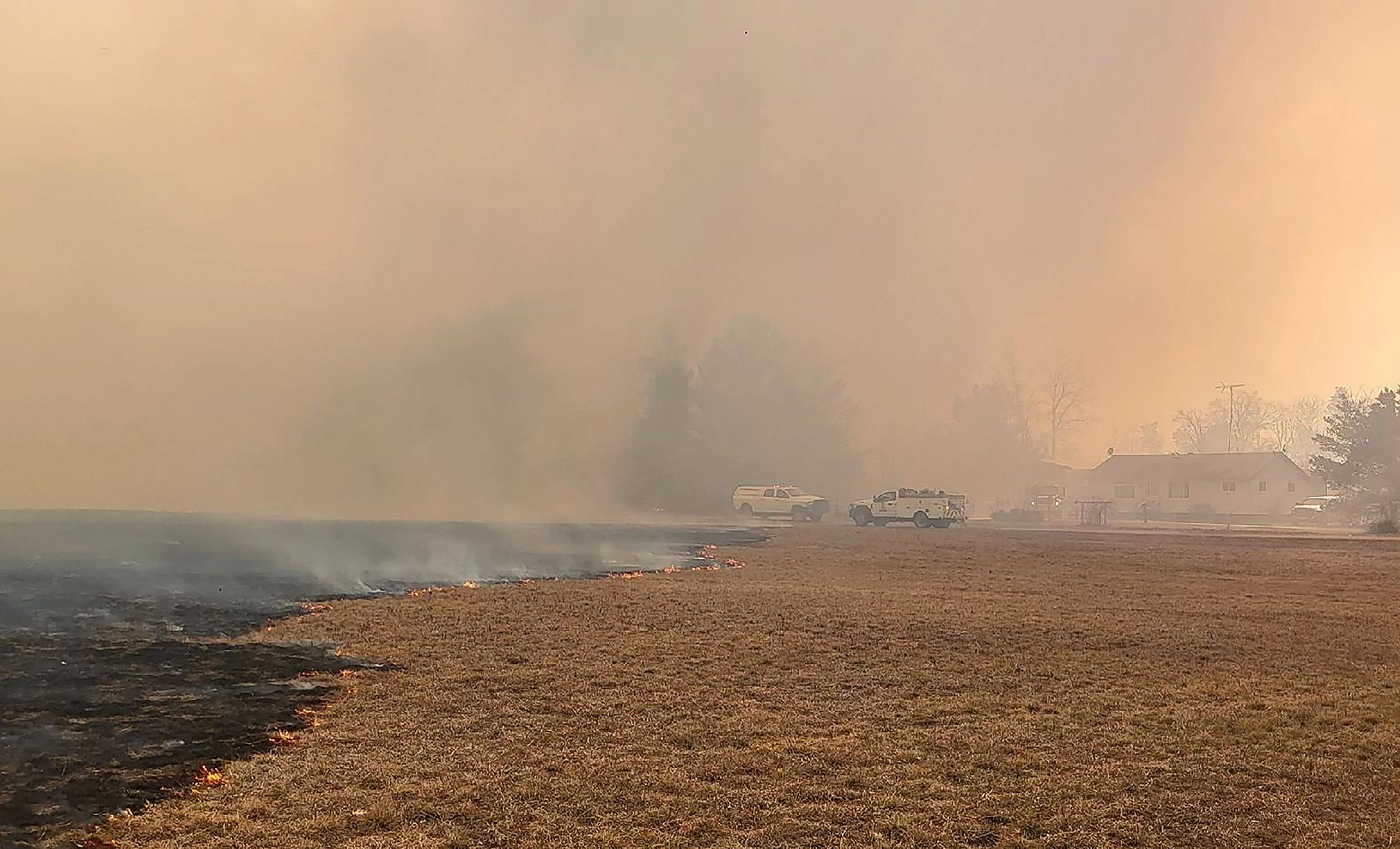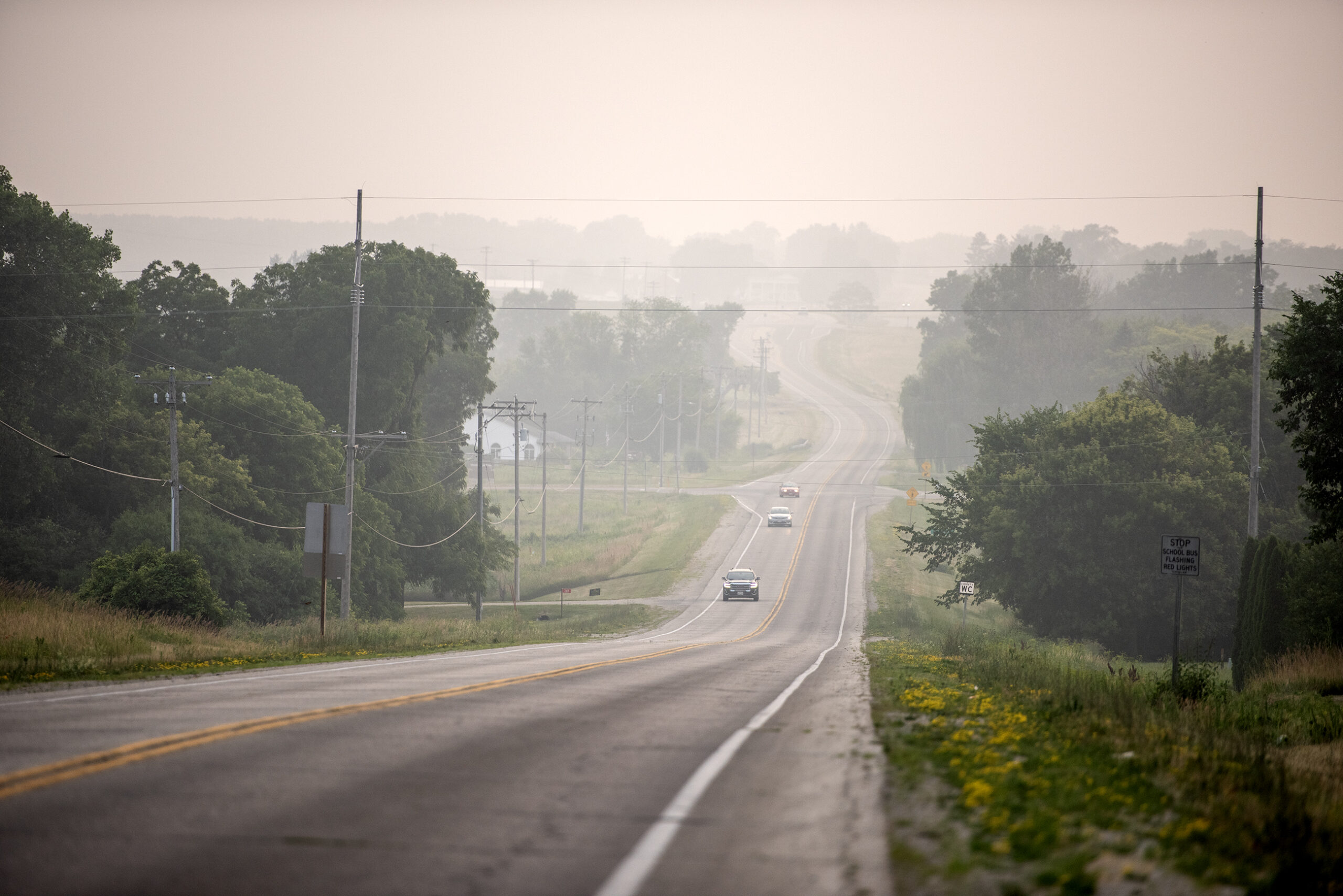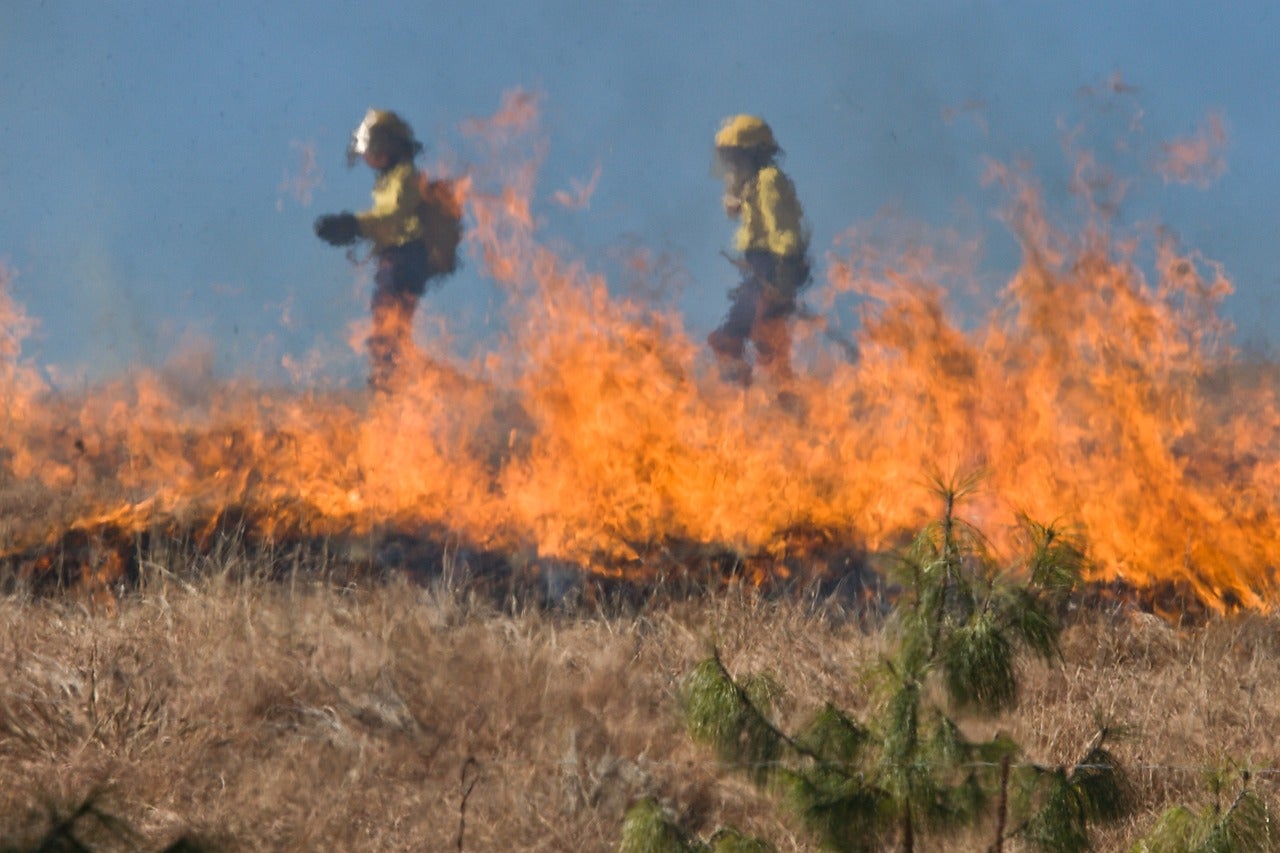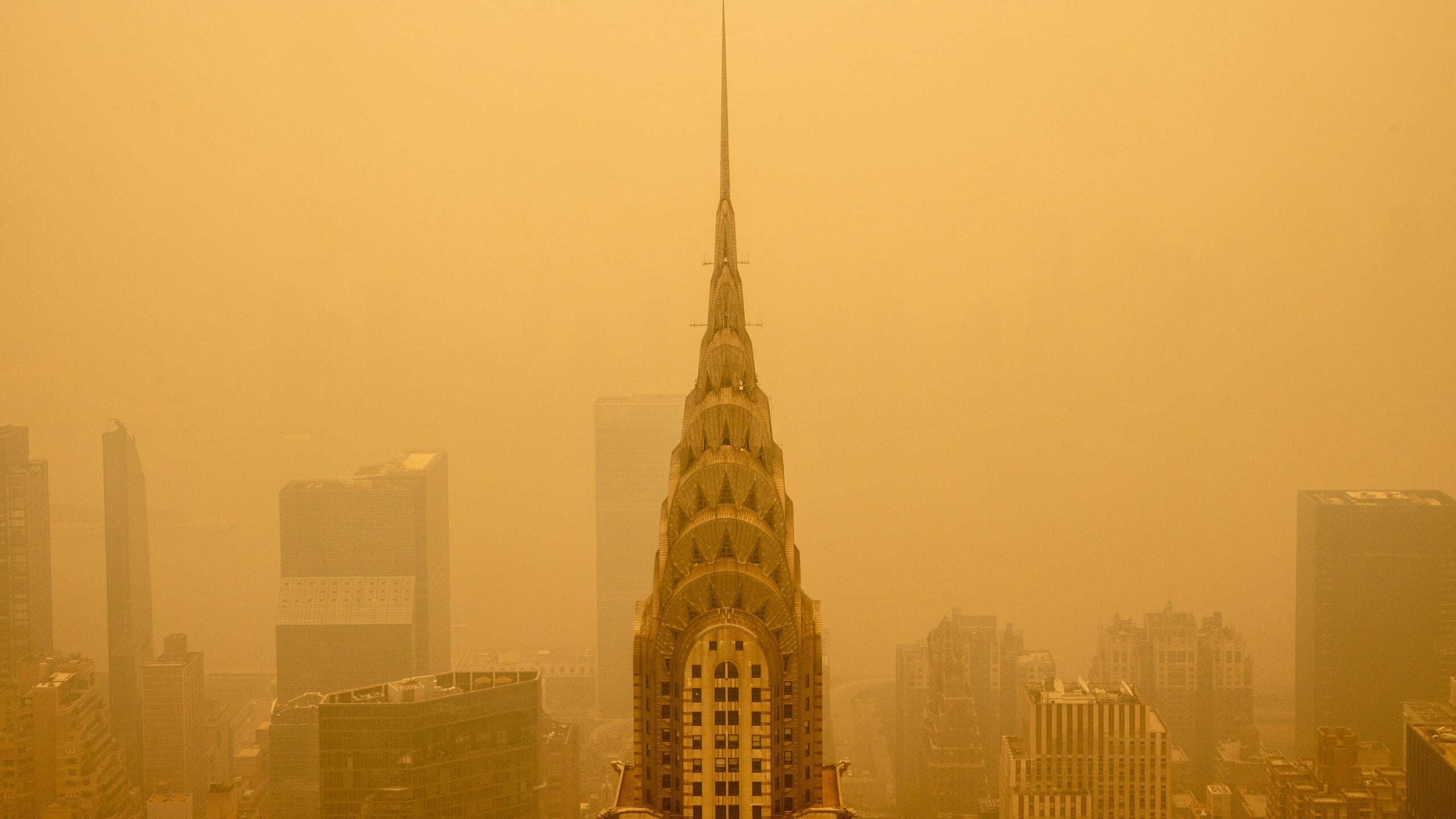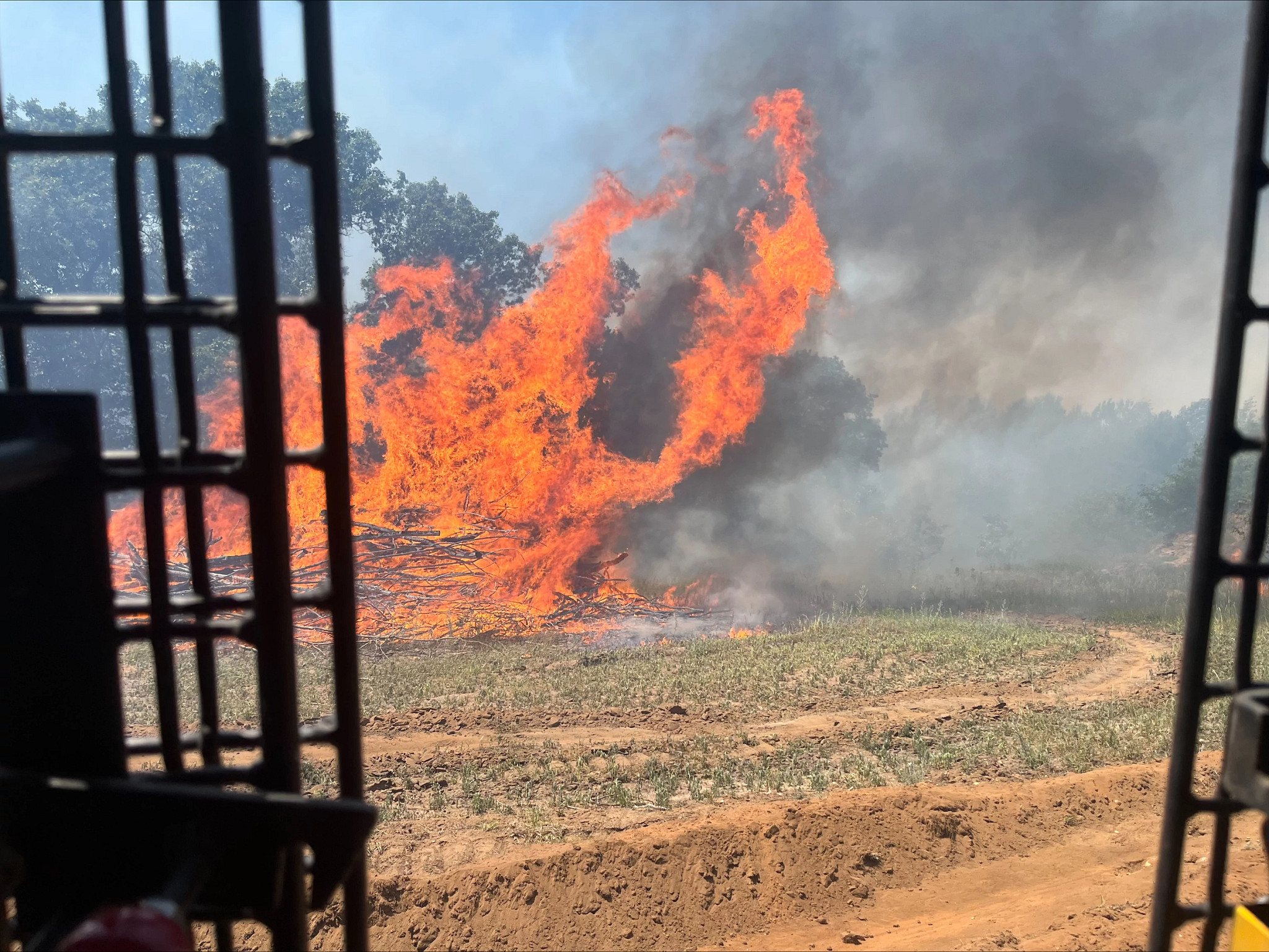Wisconsin is facing a high risk of wildfires after its warmest winter ever recorded.
The state Department of Natural Resources has suspended burn permits in all 43 counties where they have the authority to do so. Saturday was the most active wildfire day so far this year, according to the agency.
The DNR said 37 fires burned across more than 200 acres. The biggest fires were in Washburn and Douglas counties in northwest Wisconsin.
Stay informed on the latest news
Sign up for WPR’s email newsletter.
“The traditional fire season in Wisconsin is in the spring,” said Catherine Koele, the DNR’s wildfire prevention specialist. “Until we get some good rain and start to see that vegetation really green up, we’re gonna be in fire season.”
Wisconsin’s fire season started early this year, with more than 50 fires burning 160 acres in the first two months of the year. For comparison, the 10-year average over the same period is three wildfires burning 2 acres.
Chris Vagasky is the manager of Wisconet, a new statewide weather monitoring network. He said the ideal conditions for wildfires are when the weather is hot, dry and windy.
El Niño increased temperatures last year, and much of the state experienced moderate or extreme drought. A lack of snow contributed to soil being more dry than average, Vagasky said.
“April is the windiest month of the year across the United States. Here in Wisconsin we get these strong storm systems that move across the state in the spring, in the summer and in the fall,” he said. “So it’s a combination of the day-to-day weather patterns plus the climate change that we’ve been experiencing across the state that are really contributing to these conditions.”
Joe Moore, a meteorologist with the National Weather Service in Duluth, Minnesota, said we’re about a month ahead in our spring weather pattern.
“We want people to remain vigilant and definitely pay attention to local burn bans,” Moore said. “Even if you’re just burning some brush in your backyard, fires can get outta control rapidly.”
Vagasky agreed, saying humans cause 85 percent of fires in the U.S.
“We have to keep an eye on the burning that we do, and as soon as we see a spark or fire that’s getting out of control, we’ve got to call the fire department,” he said.
“And always have a fire extinguisher or a hose with you if you’re doing any burning so that you can take steps to make sure that fires out before you leave it,” Vagasky continued.
The DNR is asking Wisconsinites to avoid all outdoor burning until conditions improve.
Wisconsin Public Radio, © Copyright 2024, Board of Regents of the University of Wisconsin System and Wisconsin Educational Communications Board.

